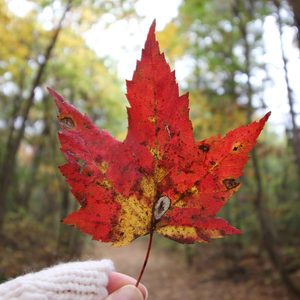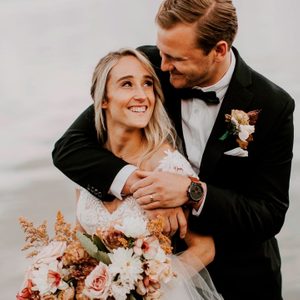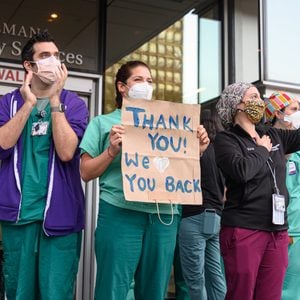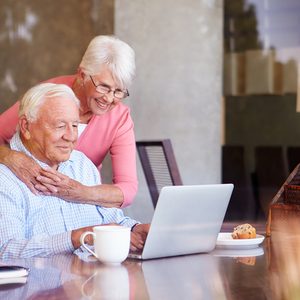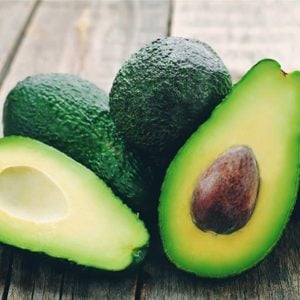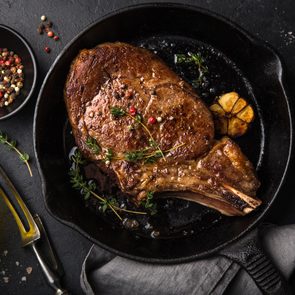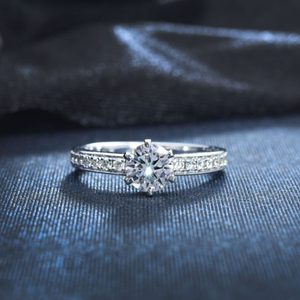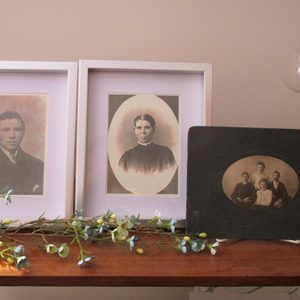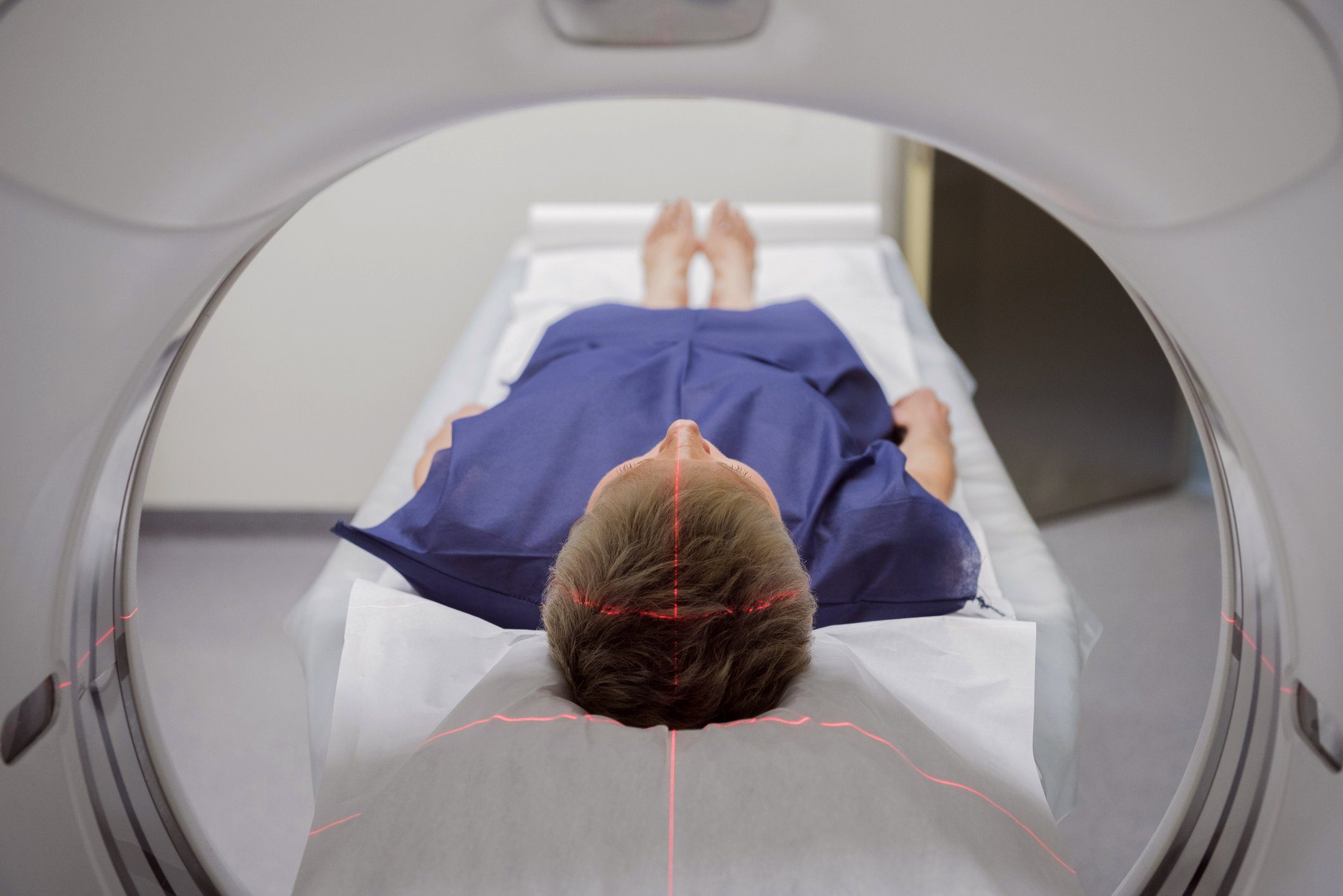
What is PTSD?
Post-traumatic stress disorder, or PTSD, is more common than you think. According to a 2013 study by the Canadian Mental Health Association, it is estimated that eight per cent of Canadians who experience a traumatic event go on to develop PTSD. And the condition seems to bring about permanent changes in how the brain functions, say researchers.
PTSD is a “trauma and stress-related disorder with links to anxiety and dissociative disorders,” explains Julia Breur, PhD, a licensed clinical psychotherapist in Boca Raton, Florida.
People with PTSD may have recurring dreams or flashbacks of the event and extreme psychological distress. Exposure to actual death or threatened death, sexual violation, or serious injury are some of the triggers associated with PTSD. This exposure to a traumatic or stressful event is required as diagnostic criterion for PTSD, outlined in the American Psychiatric Association’s (APA) fifth edition of the Diagnostic and Statistical Manual of Mental Health Disorders (DSM-5).
“The disturbance, regardless of its trigger, causes clinically significant distress or impairment in the individual’s social interactions, capacity to work, or other important areas of functioning,” says Breur.
PTSD takes a toll on the brain
The distress and associated responses play a role in what your brain looks like with PTSD. Here’s what’s happening.
“Our brains are built in a way that we remember or forget memories depending on their importance to our survival, how recently they occurred, and what happens immediately before or after the event,” says Israel Liberzon, MD, a professor and head of the Department of Psychiatry at the Texas A&M College of Medicine. He explains that any dysregulations that may develop in the PTSD brain are often dependent on what people bring to the trauma in the first place as well as the severity of the experience and how they cope with the experience post-trauma. (Find out how to recognize the signs of burnout.)
Brain regions affected by PTSD
There are some common brain regions that are most commonly impacted by PTSD. The amygdala acts as the brain’s threat-detection centre and is responsible for responding to a threat or danger, says Melanie Greenberg, PhD, a clinical psychologist in Mill Valley, California, and author of The Stress-Proof Brain. The hippocampus is another region implicated. It’s associated with storing memories in an organized way. The prefrontal cortex—more specifically, the medial prefrontal cortex—is yet another region often altered by PTSD. Its role, Breur explains, is to “modulate emotional responsiveness.”
PTSD: The amygdala grows
So, what exactly does your brain look like with PTSD? Greenberg explains that if you have PTSD, you may overreact to threats. This is where the amygdala enters the picture. “The amygdala is the brain’s threat detection centre,” she adds. It’s in this fight-or-flight brain region where it’s not unusual for a PTSD brain to show an increase in volume, says Greenberg. (Here’s how to recognize the signs of high-functioning depression.)
PTSD: The hippocampus shrinks
The hippocampus is the brain’s centre for verbal memory and is where you store memories, Greenberg says. With PTSD, in some cases it will decrease in size, she notes. The result may be that memories may surface but often only in fragments. For example, if you were sexually abused, you may sometimes see a related image, but the memory isn’t fully formed. Therefore, you can’t understand the memory or experience in its entirety. Interestingly, a study published in 2018 in PLOS ONE reports that “the right hippocampus seems to be more strongly associated with PTSD than the left.”
PTSD: The prefrontal cortex contracts
This area of the brain can calm the amygdala, says Greenberg, but it can lose volume in people with PTSD. That can result in interference with judgment and decision making.
Each PTSD brain varies
While these are the main brain regions that Dr. Liberzon says tend to be implicated in a “vast majority of PTSD individuals,” he notes that each PTSD individual can have brain variations. In other words, there isn’t a one-size-fits-all image for everyone with the condition. He says that for each person, there are different combinations regarding the deficiencies in each brain area.
Therapies to help manage PTSD
“A PTSD brain can improve,” Breur says. “The hippocampus can begin regulating memories again, the amygdala can calm down, and the medial prefrontal cortex can revert from reactive to restorative mode.” Cognitive behavioural therapy (CBT), she says, is one kind of treatment that’s been “proven to increase hippocampus volume in PTSD sufferers.”
Additionally, mindfulness may help. Greenberg writes in her Psychology Today blog, The Mindful Self-Express, that mindfulness interventions “lasting ten to 12 weeks have been shown to decrease amygdala volume and increase the connectivity between the amygdala and PFC. Mindfulness seems to make the amygdala less reactive and the PFC more able to calm down the threat response.”
Eye movement desensitization and reprocessing therapy (EMDR) may also help with PTSD. The American Psychological Association explains that it works by using eye movements in conjunction with rhythmic left-right stimulation such as tones or taps. “While clients briefly focus on the trauma memory and simultaneously experience bilateral stimulation (BLS), the vividness and emotion of the memory are reduced.”
In some cases, medication also can be helpful. There are four main antidepressant drugs that are prescribed for PTSD: the selective serotonin reuptake inhibitors (SSRIs): sertraline (Zoloft), paroxetine (Paxil), and fluoxetine (Prozac), as well as the selective serotonin-norepinephrine reuptake inhibitor (SNRI) venlafaxine (Effexor). Doctors also may try other antidepressants or other medications.
Can ecstasy help manage PTSD?
There is even some research indicating that MDMA, also known as ecstasy, can decrease PTSD symptoms when used together with psychotherapy treatment. Information published in a 2019 issue of Psychopharmacology states that studies conducted by experts at the University of British Columbia Okanagan campus have found “…significant symptom reductions in a large sample of participants with PTSD treated with active doses of MDMA combined with psychotherapy.” More studies must be done before the FDA can approve the treatment combination.
Next, meet the retired paramedic helping first responders cope with PTSD.

Point Pelee National Park is a Must-Visit For All Photographers
Photography is one of my favourite hobbies. The subjects I most enjoy taking pictures of include still life, close-ups, scenery and candid shots. (Don’t miss this impressive gallery of macro photography.)
Last summer, I was contracted to work in a town not too far from Point Pelee National Park in Leamington, Ontario. I’d been to the park a couple of times before, hoping to see the migrating monarch butterflies, but my timing was always off, so I didn’t get to see many of them.
Last August, after finishing my contract work, I spent a sunny afternoon at the park. I didn’t expect to see the butterflies again at that time of year—I just wanted to enjoy a leisurely stroll along the trails. While walking, I snapped a few photos, but I took a lot more after coming across a pond near the visitor centre. As I was sitting near the water, I noticed lots of dragonflies and other insects flying around the pond. There were also dozens of little frogs jumping around on rocks and plants, or swimming leisurely in the water.
There were quite a few people gathered around the pond, as well as some kids playing nearby, which created quite a bit of noise.
Suddenly, I spotted this little guy (above) hiding in a dead tree trunk. His colour so closely matched that of the tree that I didn’t notice him at first. He was perched in the log, just above the water, enjoying the warmth of the setting sun, and didn’t seem bothered one bit by all of the activity going on around him.
Check out these 50 gorgeous parks across Canada.
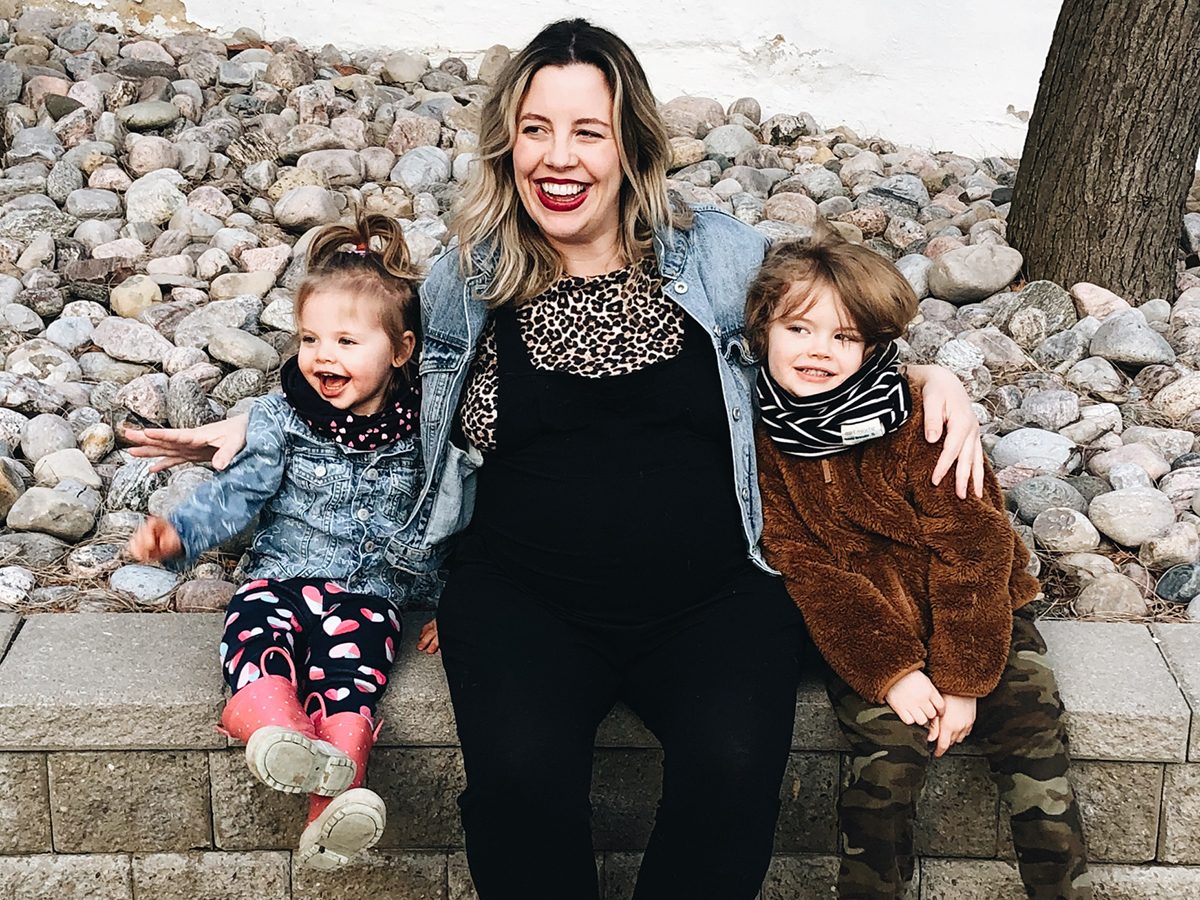
“Spring babies—they’re the greatest!”
I heard that line countless times throughout my third pregnancy. My due date was late April 2020, which, when I found out I was pregnant last fall, seemed like a pretty blissful time to welcome a baby into the world. It would mean sun-drenched stroller walks through grassy parks, with the smell of sunscreen and lilacs heavy in the air. With a team of helpful midwives, a supportive husband on standby and a cesarean section scheduled at the same hospital where I delivered my first two children, I was set.
And then COVID-19 hit.
It was January when my kindergartner’s school sent out the first alerts warning about the novel coronavirus. At that time, the tone within my circle was that this was just another flu. Nothing felt grim or scary, and I figured we’d just double-down on the hand-washing. Moms are used to cleaning sticky paws all the time; being a bit more diligent during this flu season would be no sweat.
But February melded into a never-ending March, and I started getting emails from my midwifery team about changes in policy as a result of COVID-19. Expecting moms were to arrive at appointments alone, and we were not to come at all if we were experiencing novel coronavirus symptoms. I couldn’t bring my husband? No big deal, I thought. This wasn’t my first rodeo! I could handle a solo check-up.
Then mandates started coming from the hospital, too, and with my due date looming, I felt my anxiety climb. Absolutely no visitors, and potentially no support person during labour, the hospital’s website stated. How on earth could they do that, I wondered? Isn’t birth about the collective support of your team, cheering you to the finish line? Those thoughts clashed with my sense of civic duty, and a desire to do my part to stop the spread of COVID-19. In my heart I absolutely knew that having fewer people at my birth was the right thing to do, but working through those conflicting feelings was difficult.
All of those typical pregnancy feels—nervousness over the delivery, anxiety about my other children adjusting to their new brother or sister, financial concerns—were compounded by the fact that this was happening during an unprecedented pandemic. And the well-meaning check-ins from people who told me they were thinking about me every day only served to make me feel worse. Maybe I wasn’t worrying enough? If I worried harder, would the outcome be better? Would COVID-19 end faster? Amidst all the uncertainty, one thing was sure: I wouldn’t be able to welcome baby number three into the world the way I did my first two—with elated grandmas, grandpas, aunts and best friends rushing to my bedside to capture their first photo with the wee one.
All of those feelings were dispelled with the gloriously bright sunrise the morning of April 15th. My husband and I drove to the hospital at 6:30 a.m. on a full night’s rest (my older children were being cared for by their grandparents) and savoured our last few conversations before we became parents of three. COVID-19 didn’t come up; instead, we talked about the surgery and our curiosity about the baby’s gender, with pure excitement coursing through our veins.
When we arrived, the hospital was eerily calm, and the parking lot was nearly empty. As part of the standard COVID-19 screening process, we were asked about symptoms and travel history before being admitted. Knowing our hospital was the epicentre of the SARS crisis back in 2003 and had seen many early cases of COVID-19, we felt comfortable that we were in experienced hands. We were both given masks and my husband was given strict instructions to keep his mask on at all times; I only had to wear mine when I was in common areas, but not during the surgery or in my recovery room. Once we were situated in the surgery prep room, a welcoming nurse set me up with an IV, a routine questionnaire, and loads of positive energy. About a half-hour later, my midwife waltzed in, covered in so many layers of PPE (personal protective equipment) that I could barely recognize her! There was plenty of laughter, jokes and good vibes: not an ounce of the overwhelming fear I’d felt in the months leading up to this moment. We had an opportunity to go into surgery early, so by 8:35 a.m., we heard the best sound of all—the first screams of a healthy baby boy.
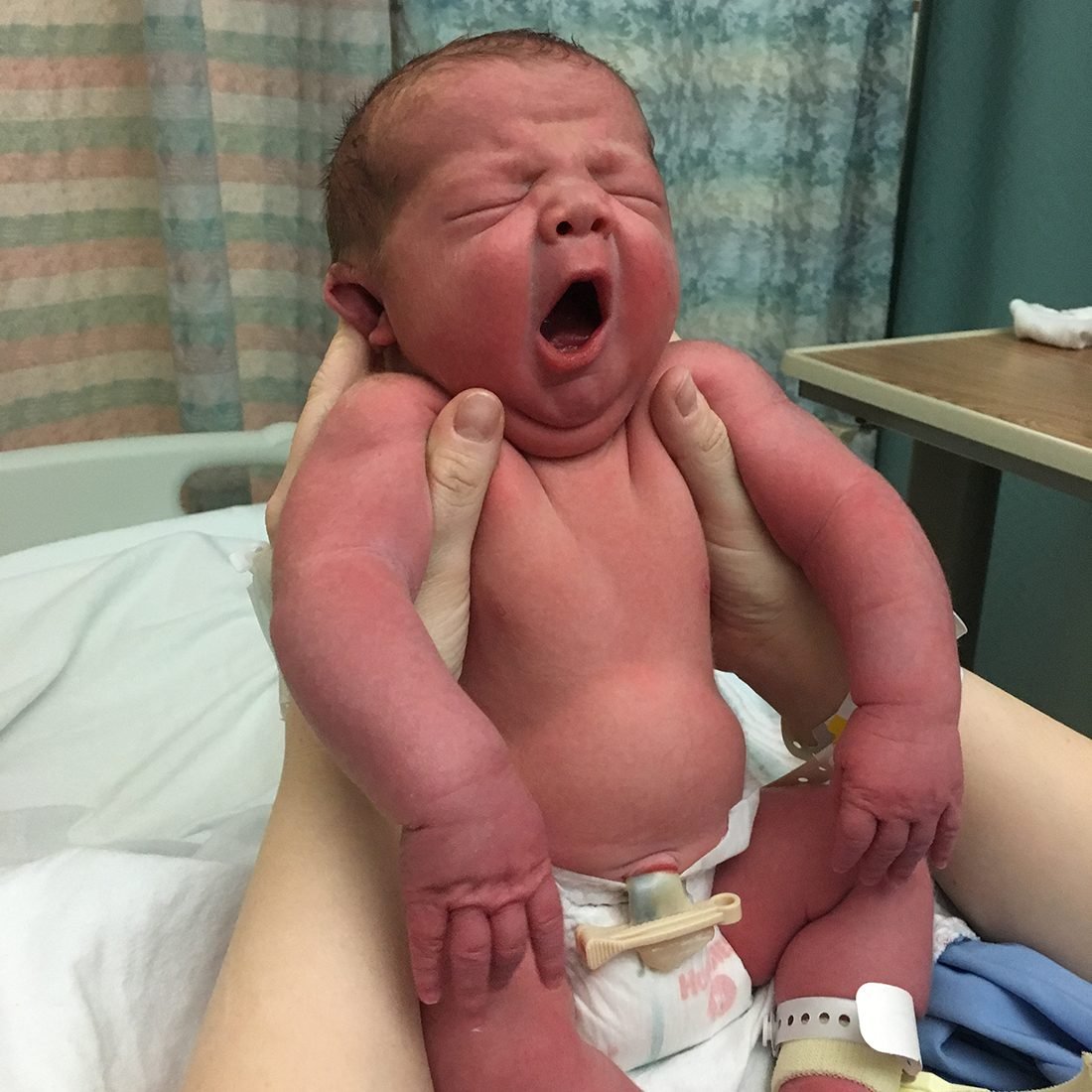
Hours later, our friends and family “met” baby Des via FaceTime, and it was—perhaps surprisingly—wonderful. Sure, they missed out on that new baby smell, but the upside was that I could make my own recovery a priority. I was able to sleep whenever I felt tired (which was quite often), and focus on re-learning breastfeeding and managing the pain from the delivery. That was a blessing in itself. I didn’t have to stress over tidying up for visitors; instead, I propped up my feet, turned on Netflix and let out a deep breath. During a lockdown that’s made us all realize how precious and fragile our health is, I was simply overjoyed to have a healthy baby in my arms.
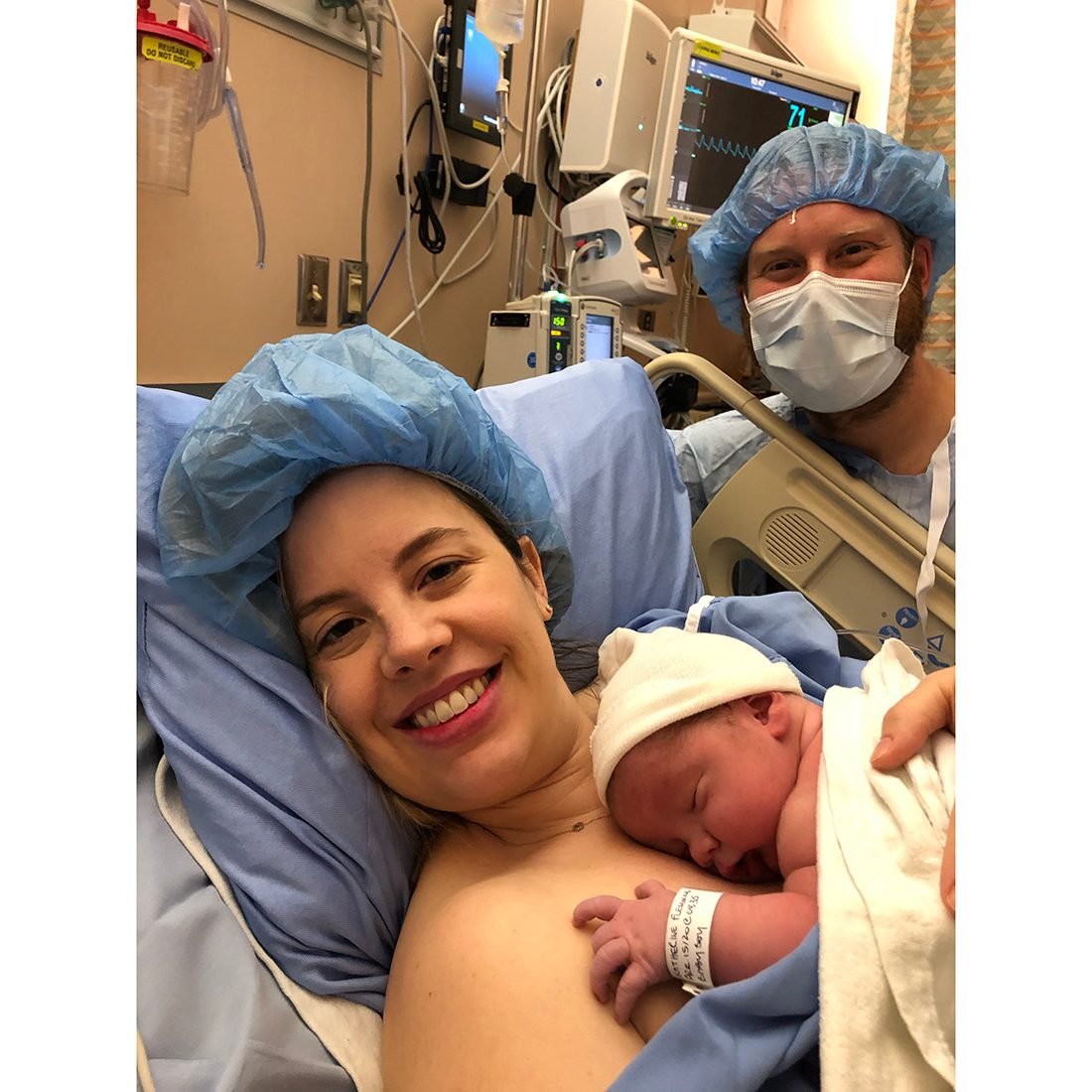
At no point during my 36-hour hospital stay was there stress over catching the virus—we were too focused on the miracle of the baby to consider the possibility. In addition to my husband, who was able to stay with me throughout, my midwife’s familiar face kept me upbeat and reassured. The most frustrating thing during the experience was probably the difficulty in understanding my medical team through their layers of PPE. You don’t realize how much you rely on lip movement and facial expressions until they’re hidden behind a mask!
For anyone about to face a similar situation, my best advice would be: worry less. As impossible as that might seem, stressing over a hospital stay won’t change your situation, and you’re only piling more onto your (already overflowing) plate. Leave it up to the medical professionals to ensure that you and your baby’s health are a top priority, and hold onto the faith that everything will work out. And if nothing else—you’ll always have an interesting story to tell your little one about how they were born during a global pandemic.
Next, find out what it’s like being an ER nurse during the COVID-19 pandemic.

Stop telling us you take the “yellow pills”
There are many different types of medications and it isn’t fair (or safe) to make your nurse play a guessing game to figure out which ones you’re on. “It is your responsibility to know what meds you take, what the dosage is, and what they’re for,” says Linda D., RN, a pediatric surgical nurse in Denver. “This goes double for parents; you should always know what your kids are taking.” If your meds are difficult to remember, ask for a printed list from your doctor or bring the bottles to your appointment. (Here are the questions you need to ask your pharmacist when filling a new prescription.)
Stop quoting Dr. Google
The Internet is a vast and wonderful resource for all kinds of illnesses. It’s also a clearinghouse for misinformation, scams, and misunderstandings. “I hate hearing a patient start a sentence with, ‘But the internet says…’,” says Lori E., RN, a registered nurse in Houston. While it’s fine to check reputable Internet sources for advice, the ultimate authorities should be your medical team, including the nurses, she says.
Stop looking for the easy way out
Medical treatments are just one part of your overall treatment plan, and what you do outside the doctor’s office matters even more than what you do when you’re there, Linda says. “My pet peeve is when a patient knows there are things they could do to help themselves get better—like drinking more water, eating a healthy diet, and exercising—but they tell me they’d just rather have a pill instead,” she explains. “You need to do your part too.”
Stop demanding to see the doctor
“I wish my patients would stop assuming that only the physician has valuable information for them,” says Jackie K., RN, a critical care nurse in Rockford, Illinois. The physician is just one part of your team—the nurses, occupational and respiratory therapists, dietitians, and other professionals all have specialties they studied for years and have valuable information patients need, she says. Find out what you should never do before a doctor’s appointment.
Stop shooting the messenger
A lot of the time it’s up to the nurses to deliver bad news or information a patient may not like, but that doesn’t mean it’s okay to take your frustrations out on them. “I have a really hard time when patients get upset when I have to tell them things that are important but that they don’t want to hear,” says Karly J., RN, a registered nurse in Provo, Utah. “Even worse, sometimes they’ll ask me to get the doctor or another nurse in hopes that they will tell them something better.”
Stop ignoring your prep instructions
Whether it’s fasting, taking a certain medication, or bringing items with you, there will always be things you need to do before having any kind of medical treatment. These instructions are for your own good yet all too often go ignored, says Elizabeth D., RN, a scrub nurse in Stafford, Virginia. “Please, for the love of all things holy, follow your pre-op instructions,” she says. “We didn’t just invent them on a whim.” (Check out these colonoscopy prep tips, for instance.)
Stop self-diagnosing
It’s fine to share ideas about what your problem might be but once you start insisting you already know what you have and demanding a particular drug or treatment, you’ve crossed the line from helpful to irritating and possibly dangerous, Elizabeth says. Let the medical staff do their job.

Stop asking to “speak to the manager”
“Many patients don’t understand that hospitals and health care in general do not function the same as other businesses. Being difficult, rude, loud, or trying to escalate your concerns does not work the same way,” says Erin A., RN, a surgical nurse in Canada. “In all reality ticking off the people trying to help you will likely only make things worse for you or your loved one. There is a big difference between advocating for yourself and being a jerk.”
Stop lying to me
Not only is it irritating to be lied to (and often nurses can tell when you’re fibbing) but being dishonest can put your health at serious risk, says Amy E., RN, a diabetes educator in Minneapolis. “I hate it when patients tell me what they think I want to hear or what they know they should be doing (but aren’t) or telling me good things they used to do (but no longer are), she says. “You’ve got to be honest with yourself and me.”
Stop skipping questions
Patients have to fill out a lot of paperwork and then answer even more questions at nearly every visit but all of these queries aren’t busywork, they’re essential to helping the nurse do her job, Amy says. This means answering all the questions completely, even if you think they’re redundant or not relevant. “If you don’t answer my questions completely I can’t figure out the problem and work toward fixing it,” she explains. Find out more mistakes that could lead to a misdiagnosis in the ER.
Stop wasting my time
It may sound harsh but if you’re not willing to take medical advice and act on it then you might as well just stay home, Amy says. “I’m tired of patients wanting someone to just tell them what they want to hear—which is usually ‘you’re fine, do what you want’,” she explains. “If you honestly don’t want to change, don’t waste our time.”
Stop demanding antibiotics for everything
There is an antibiotic-resistance crisis looming and a major cause is people using antibiotics for viral infections or other non-bacterial conditions. Not only does using antibiotics when they’re not warranted up your risk for future resistance but they won’t do any good for your cold or flu anyhow, says Jen S., NP, a family nurse practitioner in Minneapolis. “Stop requesting or demanding antibiotics for every little thing,” she says.
Stop dismissing home remedies
Basic self-care strategies—like ice packs, warm baths, compression bandages, rest, increased fluids, ibuprofen—used to be the standard first-line procedures for minor illnesses and injuries, but these days too many patients want to go straight for the drugs, Jen says. “I wish patients would stop rejecting these self-care remedies without even trying them,” she says. “A lot of them really can help!” Here are 13 more secrets Canadian nurses want you to know.
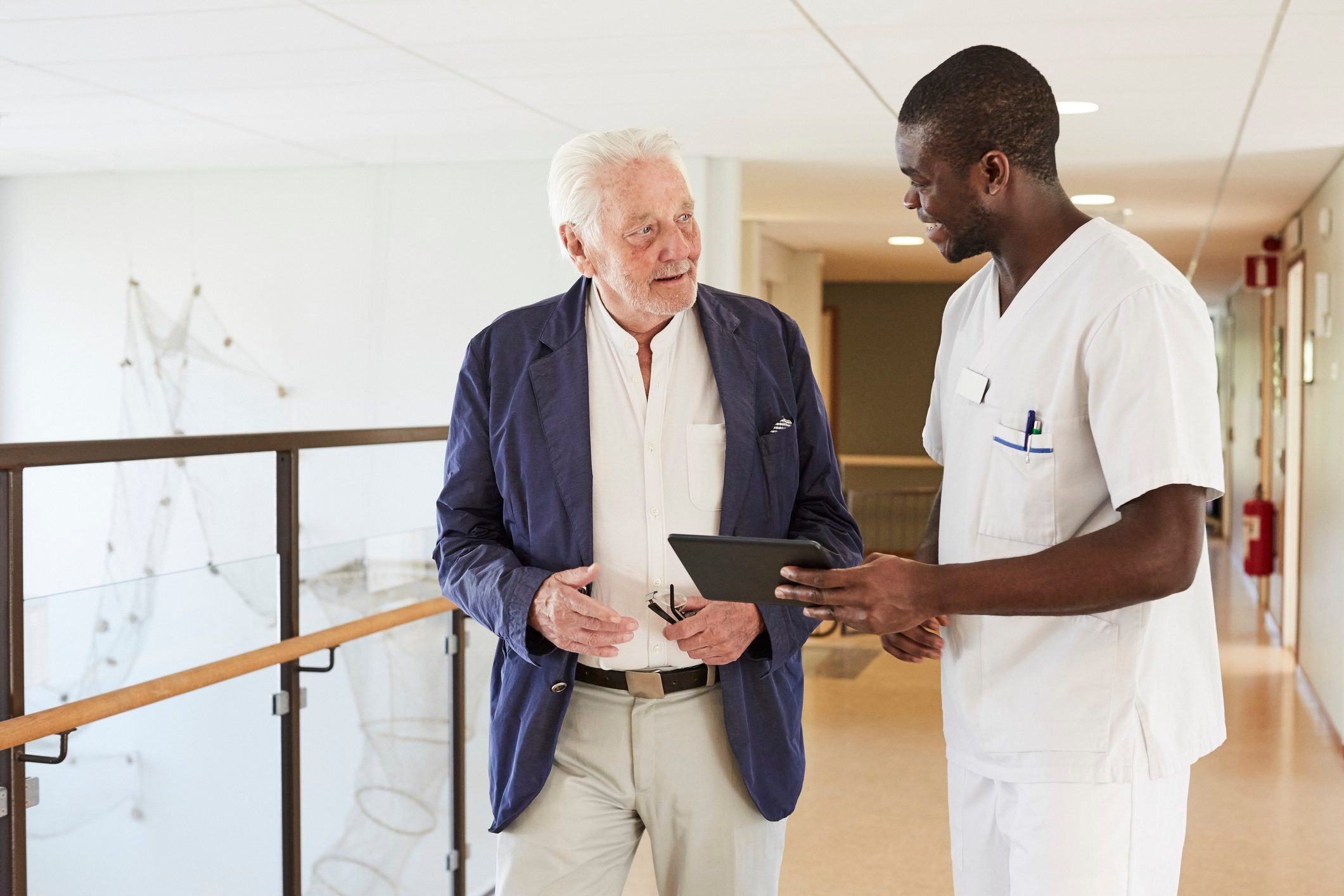
Stop asking for my advice only to ignore it
Nurses are great people to ask for advice—not only have they seen practically everything but they’re often the ones doing most of the hands-on patient care, so they have a unique perspective on your condition and needs. The problem? “I wish patients would stop asking me (and everyone else) for advice and then refuse to do any of it or argue with me about it,” says Carolyn Guy, RN, a registered nurse in Windsor, California.
Stop joking about medical mistakes
“I really wish patients would stop joking about which part of the body or side we are doing surgery on,” says Angie K., RN, a surgical nurse in Draper, Utah. “I know they’re just trying to defuse tension but it’s not funny because it happens and when it does, it is devastating.” If you’re truly concerned about a mistake then bring it up with your nurse and he or she can talk to you about real ways to ensure your surgery happens correctly, she adds.
Stop withholding your questions
Doctors and nurses can seem intimidating, and Angie says she’s seen more than one patient freeze up in their presence. This often means that they don’t ask important questions and leave feeling anxious, scared, or unheard. “Please speak your mind and ask questions, even ones you might think are silly,” she says. “That’s what we are here for!” If you think you might freeze up during a consultation, bring a written list of questions so you won’t forget to ask them. Here are more tips on how to speak with your doctor.
Stop being rude to nurses and kind to doctors
You wouldn’t think people would need to be reminded of basic courtesy but there are patients who treat nurses in a very derogatory manner and then turn on the charm when the doctor enters the room—and it infuriates nurses, Angie says. Be kind to everyone on your medical team, period.
Stop lying about using drugs
Many drugs, both illegal and abused legal ones, can seriously compromise your health and medical treatment. “Don’t ever lie to us about drug use,” Angie says.” We aren’t going to call the police, we just want to take care of you.”
Next, find out the doctor appointment mistakes you didn’t realize you were making.

You always need to be careful when cooking meat. In fact, the number one source of food poisoning is rare or undercooked meat. But some people can’t resist the allure of a juicy rare steak or burger. According to the Academy of Nutrition and Dietetics, using a meat thermometer to ensure your rare meat is a safe temperature for consumption can make eating rare meats safe. But their standards say, while it’s OK to enjoy your steak rare, you can’t do the same with a hamburger, or any ground meat for that matter.
The reason why ground meat isn’t safe has to do with the very nature of its creation, according to food safety experts. “Grinding the meat extends the fabrication (or cutting) process one more level,” says Ted Siegel, chef/instructor at the Institute of Culinary Education. “Usually pathogens are found on the surface of the muscle tissue, so once you start grinding up the meat, you’re dispersing the pathogens throughout more of the meat beyond the surface.” Siegel says that as a result, if you serve a burger that’s rare and undercooked, these pathogens haven’t been killed off and are still living in meat, increasing the risk of food poisoning. To eliminate this risk, the Academy of Nutrition and Dietetics says ground meat needs to reach 160 degrees Fahrenheit to be safe to eat, which would make it well done. If you’re eating it rare, there’s a chance there’s bacteria present.
On the flip side, you can still enjoy your steaks rare. “[With] something like a steak, where the pathogens are only on the surface, once that steak is seared, the pathogens are generally killed/cooked off and you can serve it [at] a lower degree of doneness, from rare to medium,” Siegel says. Roasts and chops can also be eaten rare, meaning the meat only needs to reach 145 degrees Fahrenheit internally to be eaten. Experts say using a meat thermometer is the safest way to ensure your food’s safety.
As a librarian I usually agree that most things do go better with a book, especially meals, baths and country picnics. Apparently many people agree—and they take it quite a bit further than I ever would! Here are some things that have been found in library books (not necessarily by me or my colleagues). Let’s break it down by categories:
Financial
Apparently valuables make great bookmarks. We’re talking crisp $100 bills, credit cards, lottery tickets, theatre tickets and even live paychecks (not a receipt of direct deposit).
Natural
Books seem to be a popular place for readers to store natural souvenirs. Librarians have opened returned books to find pressed flowers, four-leaf clovers, dandelions gone to seed and whole marijuana leaves.
Unmentionable
What you do in your private reading time sometimes ends up in public. Imagine picking up a returned book and having one of these fall out: tampons (thankfully unused), unrolled condoms (ditto), a home pregnancy test (positive!) and a glass vial labeled “smallpox sample.”
Dangerous
Sharp objects and books should probably not go together, and yet librarians have found scissors, knives, a cheese slicer and even a small hatchet.
Theoretically edible
Eating and reading are a natural combo, which is why snacks are a popular bookmark. We’re talking Cheetos (mostly crumbled), a pickle slice, a Pop-Tart, a Kraft Single (still wrapped) and even whole strips of bacon (both cooked and raw).
Way too personal
If you thought condoms and tampons were private, these other items make those look tame. Librarians have found genuine love letters, a visitor registration form for the local jail, divorce agreements and even naughty photos. If you thought these sound crazy, you won’t believe what these people found after the snow melted!
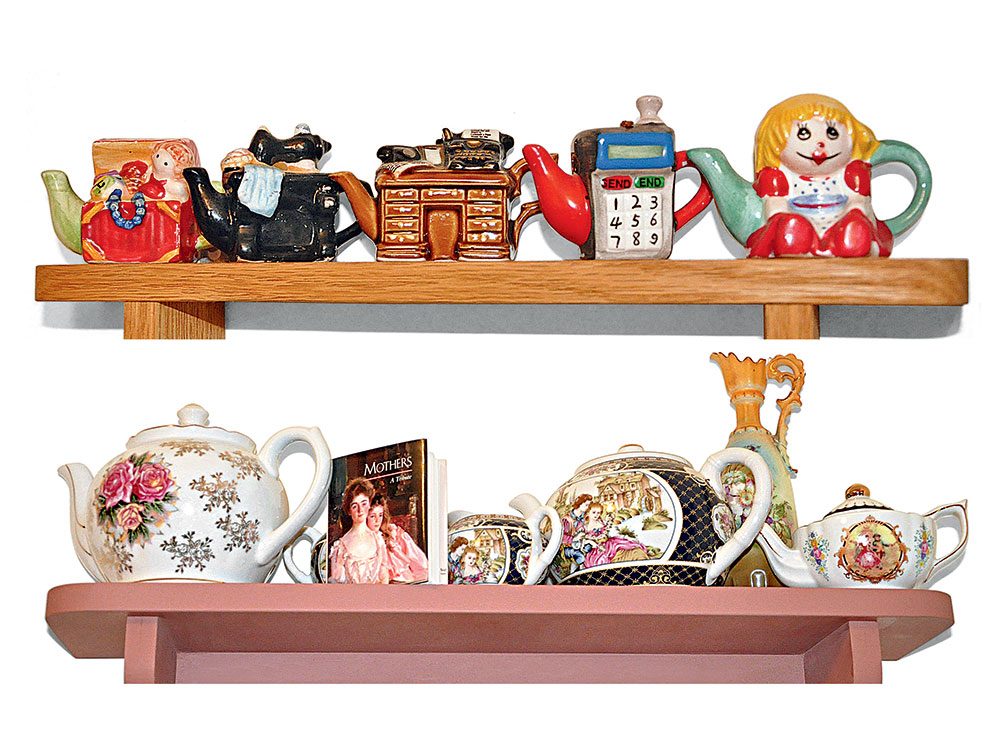
This teapot collection keeps growing!
What started out as a lark in 1980 has turned into a teapot collection numbering more than 400 items and counting. It was then that my friend Clare Smith decided to follow the trend of her friends who were collectors.
“Everybody was collecting spoons. I had two teapots, so I thought, why not collect teapots?” she says. It didn’t take long before family took her seriously and then her friends jumped on the bandwagon, too. Now any time someone sees a teapot that looks unique or may not already be owned by Clare, they purchase it for her as a gift to add to the growing collection.
Clare’s collection includes teapots constructed of many types of materials, including metal, wood, cloth, ceramic, paper and glass, just to name a few. Some come from distant lands such as Russia and Poland, or are of Asian origins. There are wonderful Royal Doulton pieces, and fun novelty teapots for Christmas and Easter. She also has a teapot village as well as a few precious silver teapots that have been in her family for generations. Then there are those in the shape of animals, or featuring animals, including several funny ones that you just have to see to believe.
Then there are all the other items Clare owns that feature teapots, including earrings, necklaces, paperweights, doorstops, key hooks, light switch covers, candles, photo holders, cookie cutters, night lights and a perfume bottle! Clare even has a musical teapot that functions much like a music box. Tea concoctions are always a part of the recipe books Clare has on hand and she has a set of miniature teapots that showcase various inventions over the years; for example, one is in the shape of a refrigerator and indicates the year in which the refrigerator was invented. The set has become somewhat of a history lesson, sitting on shelves in the kitchen.
Except for a few of the miniatures, she has received very few duplicates over the years. Her husband Bruce tried for a number of years to limit the teapot gifting to just her birthday and Christmas, but the lure of the pots has become too great. Few can resist a new teapot for Clare when they come upon one while shopping—especially if it’s one that is definitely not yet in her massive collection.
All are displayed on shelves in various rooms of the house, with only the laundry room and lower bathroom not featuring any items from the collection. Bruce and Clare look at each other, somewhat perplexed as to why those two spaces have escaped adornment… For now.
When asked if Clare ever envisioned the teapot collection growing as large as it has today, she laughs.
“No. Never did I think it would get as big as it is has.” And it continues to grow, even if a few pieces do get put to good use when company comes over.
Next, check out these quirky collections from across Canada.
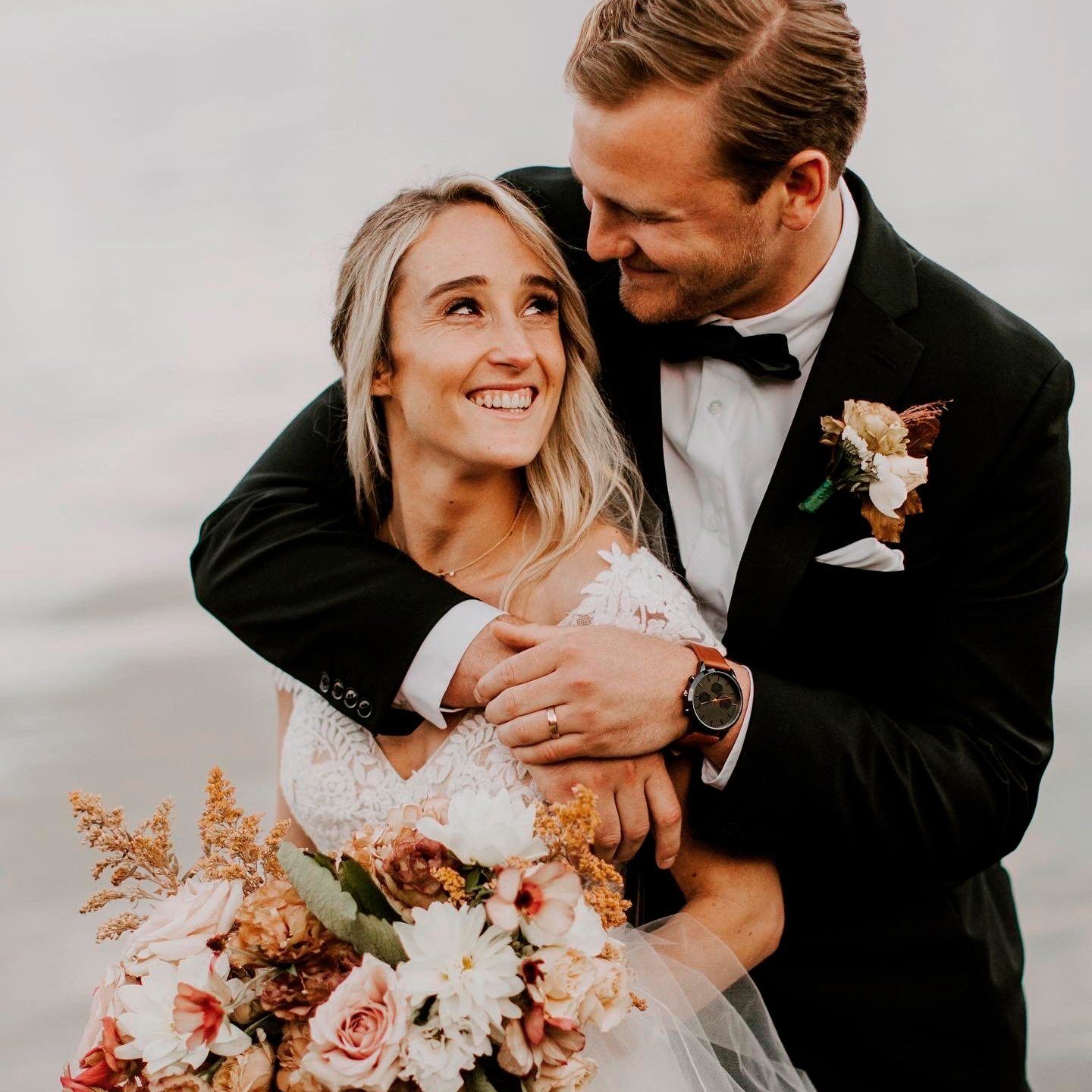
Rich and I were high school sweethearts, dating all the way until we decided to go to college in different states—California for him and Virginia for me. Yet even though we had broken up, I still thought about him. When we reconnected in 2018, the sparks flew, all my doubts were gone, and I knew for sure this was the man I wanted to spend the rest of my life with. We got engaged nine months later on June 23, 2019. While that may seem quick to some people, really we’d been preparing for this since the eleventh grade!
We planned our dream wedding: a beautiful flower-strewn ceremony in front of nearly 200 of our friends and family in San Diego, followed by a grand reception and then off on our honeymoon. The date we picked was April 18, which was right smack dab in the middle of the COVID-19 pandemic. We live in California, so we were among the first Americans to be put under a shelter-in-place in order. It was just three weeks before our wedding yet we weren’t even supposed to go out to eat, much less have a huge party. We had to cancel our wedding.
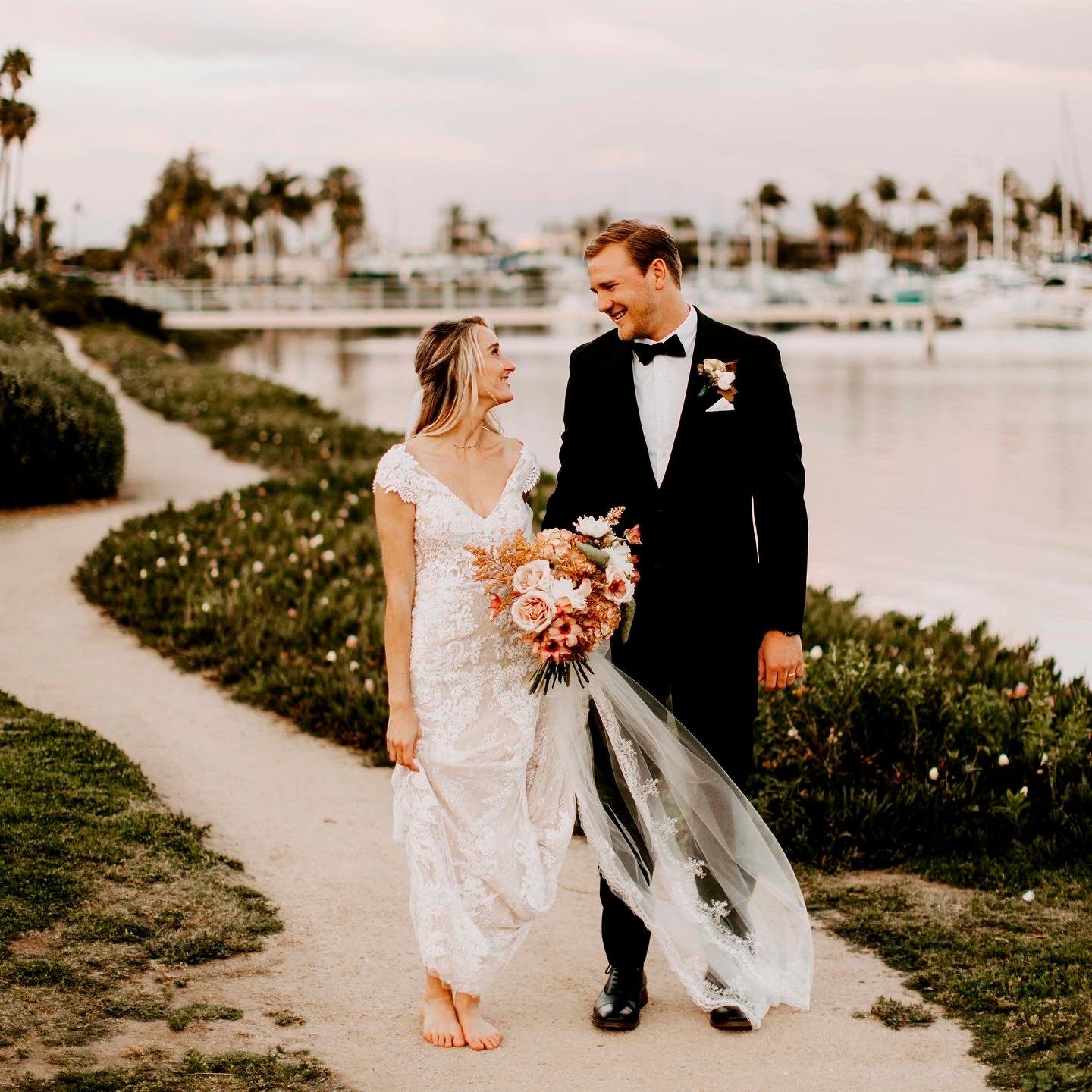
There was another complicating factor. Rich and I are both medical workers. I’m an ER nurse and he’s an intensive care unit (ICU) tech. We were told to prepare to work extra hours caring for an onslaught of COVID-19 patients. Between worrying about the pandemic and our cancelled wedding, it was a very scary and frustrating time. While things were ramping up on the West Coast, the pandemic was in full swing on the East Coast.
Then, on April 11, one week before our would-be wedding date, my roommate Bethany told me we needed to talk. “So I did something last night…,” she started. That thing was a tweet asking for help for two healthcare workers in love to get married and she tagged a bunch of celebrities including Ellen Degeneres, Dax Shepherd, Kristin Bell, and best selling author Bob Goff, who is also a philanthropist and honorary consul of Uganda.
“…and Bob Goff messaged me this morning, he wants to help you,” Bethany concluded.
I sat there stunned and surprised—and part of me even wondered if it was a prank. But once Rich and I talked to him on the phone, we realized he was just as excited about our wedding as we were and he had the perfect way to do it without breaking quarantine rules. When we asked him why he wanted to throw a wedding for strangers in the middle of a pandemic, he simply said he wanted to thank us for our service and spread kindness and love.
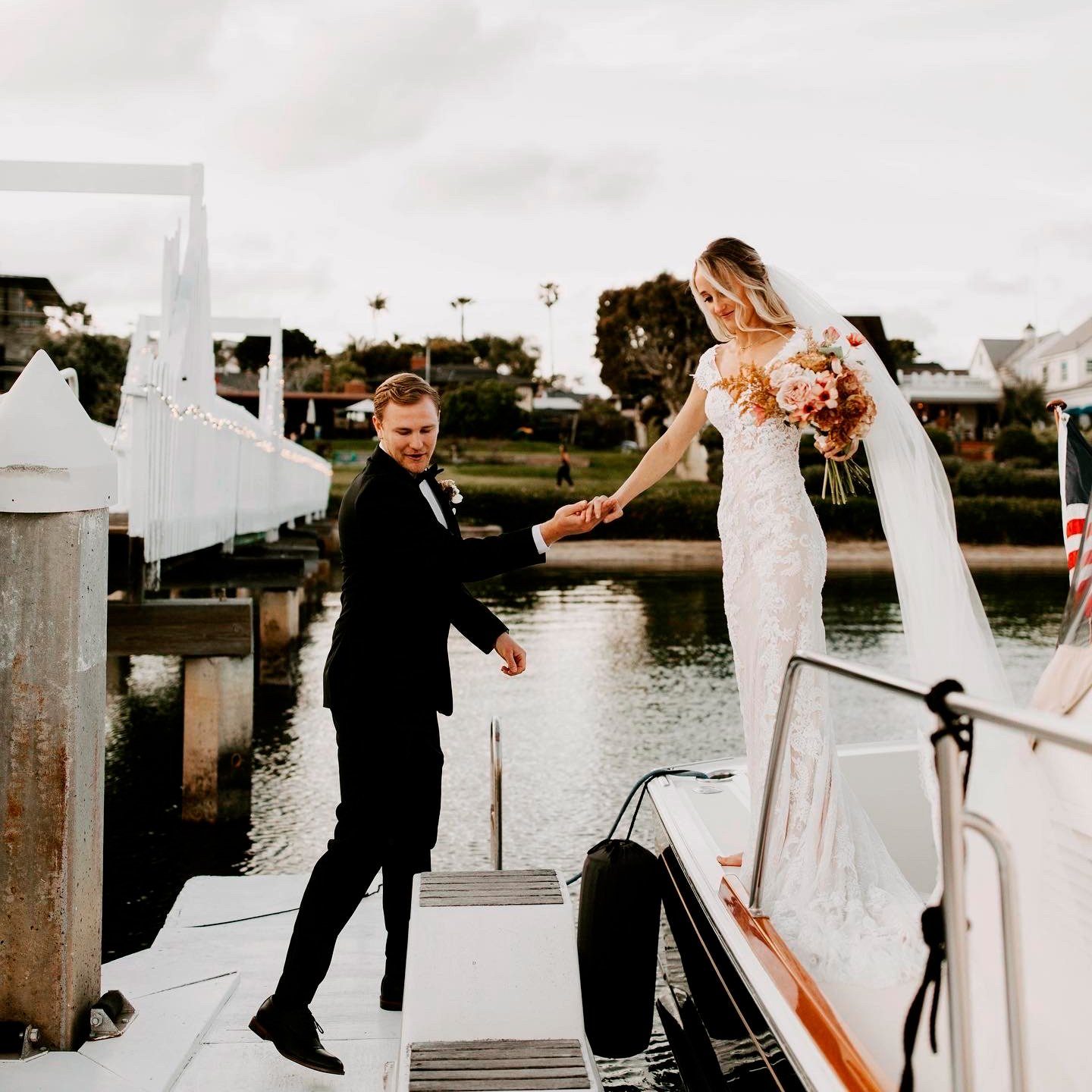
Over the next week we worked with Bob and his wife, transforming our dream wedding into something even better than we had envisioned. On April 18, I put on my beautiful wedding dress, and Rich and I walked down a rose-petal-strewn dock. We exchanged vows on Bob’s boat, in front of our families who were each positioned on nearby but separate piers. From the flowers to the decorative flags on the boat to the photographer, every detail was perfect.
Afterward, my mom coordinated a “drive-by reception.” She decorated the driveway and after our first dance (yes, on the driveway!) all our loved ones lined up in their cars to drive by and wish us well. A neighbour even lit off fireworks to add to the festivity.
My wedding wasn’t at all as I’d first planned but through some creativity and the generosity of a wonderful stranger, it turned out better than I ever could have imagined. Bob’s gift was the best wedding present. Someday Rich and I hope to take our dream honeymoon trip. In the meantime, we are so grateful to be able to start our life together happy, healthy, and with such a great story.
Read more heartwarming stories during the COVID-19 pandemic.


